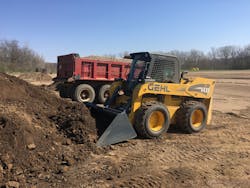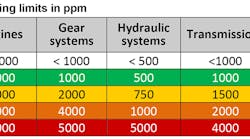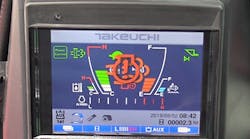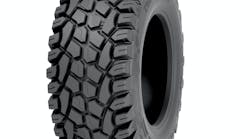Bucket maintenance on a skid steer or compact track loader depends on a keen eye and common sense—but it also has to do with choosing the right accessories for the bucket.
Bucket manufacturer Arrow Material Handling, Lenexa, Kan., has some solid advice for maintenance managers, starting with the cutting edge, which is the most common location of excessive wear on a bucket.
When the cutting edge grinds against hard surfaces like asphalt or concrete, the center wears unevenly, resulting in a scallop shape.
There are several cutting edge options. No. 1 is the weld-on cutting edge. Technically, every bucket comes with a weld-on cutting edge; however, when excessive wear causes the cutting edge to recede into the bucket, replacement can exceed the total cost of the bucket.
Option No. 2 is a bolt-on reversible cutting edge. These replaceable cutting edges can be reversed before the edge scallops back into the bucket. Once both sides wear completely, the edge can be replaced.
Don't try to reuse the bolts when reversing the bolt on edge, Arrow says, as the threads get damaged in use and the bolts won't be reusable. Instead, just cut them off with a torch and replace them.
Also consider the bucket teeth. On tooth buckets, the tooth shank is welded to the weld-on cutting edge. Here, the use of a weld-on cutting edge is common because bucket teeth receive all the wear, therefore protecting the cutting edge.
Bucket teeth attach by pin or crimp on to a shank. Pin-on-style teeth are typically recommended, are easy to change, and are less likely to dislodge while in use. Regular inspection of these teeth is recommended. On a general-purpose tooth, if the flat is missing or worn back to the shank, it needs to be replaced.
Arrow recommends against using a tooth bucket with missing teeth. This will wear out the shank and the tooth will not fit properly when replaced. It’s best to keep extra teeth on-hand and replace them as needed.
More on maintenance and technique: Bucket inspections are critical to the ongoing upkeep and maintenance of both your machine and attachments. Being aware of cracks, stress fractures, excessive wear, loose hoses, dirt buildup in or around hydraulic fittings, and damage to hydraulic hoses makes identifying and fixing future problems easier.
The bucket coupler is the most commonly damaged part of the skid steer bucket.
“This is where the bucket connects to the skid loader and requires a good solid fit,” says Scott Clevenger, VP of Sales at Arrow. “If cracked or extremely loose, don’t use it. Have a welder repair it, or maybe it’s time for a new bucket. Don’t let mud or other debris build up in this area or in the pin holes at the bottom of the coupler.
“Keeping this area clean will only make your job a lot easier when it’s time to change out to a different attachment,” Clevenger says.
Arrow also has some common-sense usage advice to cut down on wear.
When grading, it’s all in the technique. Pressure is probably the most important factor when grading with a bucket. Too much pressure and you’ll find it hard to grade with any kind of finesse, also you’ll wear down the bottom of the bucket.
Speed is also a factor. Grading too fast can cause unnecessary damage and wear due to collisions with unseen and sometimes immovable objects.
When back dragging, pressure is key, much like it is in grading. Again, too much pressure and this time it’s the cutting edge that will bear the brunt of the damage.
A popular way around this snafu is to practice, and to utilize your machine’s “float” function, if equipped. The float function disables hydraulic flow to the vertical lift of your machine. This means the weight of both the arms and the bucket will fall to the ground allowing the bucket to move, or float, over the contours of the terrain.
Finally, keep the speed in check and avoid impacts as much as possible.





